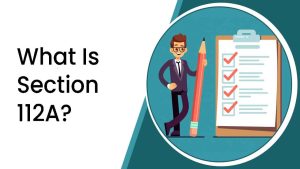The new tax regime (for Assessment Year 2021-22) has proposed lower income-tax rates, for income segments up to Rs. 15 lakh, but you need to remember you will have to forgo some exemptions and deductions available under Chapter VI-A of the Income Tax Act, 1961.
In this article, we have tried to provide an understanding about New tax regime and listed some pros and cons of it and it’s comparison with the existing tax regime.
Surcharge: The above rates are subject to a surcharge under both tax regimes as per the Act.
Education and Higher Education cess: The above rates are further subject to education and higher education cess @ 4% of the total tax and surcharge.
PROS OF THE NEW TAX REGIME
- It provides for concessional tax rates vis-à-vis tax rates in the existing or old regime.
- Anyone paying taxes without claiming exemptions under the existing system can benefit from paying a lower upfront rate of tax. The reduced tax rate would provide more disposable income to the taxpayer, who could not invest in specified instruments due to certain financial or other personal reasons.
- Additionally, as most of the exemptions and deductions are not available, the documentation required is reduced and filing of tax has become simpler.
- A taxpayer can switch from the old system to the new one if he/she has no income from a business or business. This offers better flexibility to taxpayers to choose a different tax regime as per their requirements.
CONS OF THE NEW TAX REGIME
- The new tax regime introduces lower tax rates in lieu of exemptions. It is good for people with low investments, but people who already invest a fair amount in tax-free savings schemes will suffer as they will not be able to claim exemptions.
- The new income tax regime can potentially affect the long-term savings of an individual as many people will refrain from investing in tax-free schemes due to exclusion of 70 common exemptions.
- Investment in housing property is a major tax saver for Indian households and making full use of it can earn very high tax deductions. However, with no such exemptions under the new tax structure, the real estate sector could encounter falling demand.
- The taxpayer, having income from business or profession, cannot switch between the new tax regime and old tax regimes every year. Further, if the taxpayer having income from business or profession opts for the new tax regime, such taxpayers get only one chance in their lifetime to come back to the regular tax regime and will not be eligible for opting new tax regime again, unless the taxpayer’s business income ceases to exist.
- Deduction/exemption/allowance/losses which are not allowed (income-head-wise) under the new tax regime:
- Income from Salary:
- Section 10(5) – Leave Travel Concession,
- Section 10(13A) – House Rent Allowance,
- Section 10(14) – Allowance other than allowances as may be prescribed for this purpose
- Section 10(17) – Allowance to MP’s / MLA’s Section 16 – Standard deduction (Rs. 50,000), deduction of entertainment allowance for government employees (5000) and Professional Tax (Rs. 2500)
- Income from House property:
- Section 24(b)- Interest on house property in respect of the self-occupied or vacant property (Loss from rented house property shall not be allowed to be set off under any other head and would be allowed to be carried forward)
- Income from Business or Profession:
- Section 10AA – Exemption for newly established Special Economic Zones
- Section 32(1)(iia) – Additional Depreciation @ 20% or 35% for manufacturing units
- Section 32AD- Investment in new plant and machinery in notified backward areas in certain states
- Section 33AB – Tea, Coffee & Rubber Plantation Business
- Section 33ABA – Site Restoration Fund
- 35(1)(ii) Deduction in respect of amount paid to university, college or other institution for certain scientific research
- 35(1)(iia) Deduction in respect of amount paid to certain companies to be used for scientific research
- 35(1)(iii) Deduction in respect of amount paid to research association
- 35(2AA) Expenditure on scientific research
- Section 35AD – Specified Business Profits Fully Exempt
- Section 35CCC – Agriculture Extension Projects
- Income from Other Sources:
- Section 10(32)- Deduction of income of minor child upto ₹1,500 per child for maximum 2 children
- Section 57 (iia)- Deduction from family pension
- Set off and carry forward of losses:
- No set off of any loss carried forward or depreciation from any earlier assessment year is allowed, if such loss or depreciation is attributable to any of the deductions referred above;
- No set off of any loss under the head “Income from house property” with any other head of income is allowed;
- Depreciation under section 32 of the Act (except additional depreciation as referred in clause (iia) of sub-section (1) of the section 32 of the Act), is required to be claimed in such manner as may be prescribed.
- Deduction under Chapter VI-A:
- Section 80C – Deduction in respect of life insurance premium, deferred annuity, contributions to provident fund, subscription to certain equity shares or debentures, etc
- Section 80CCA – Deduction in respect of deposits under National Savings Scheme or payment to a deferred annuity plan.
- Section 80CCB – Deduction in respect of investment under ELSS Section
- 80CCC – Deduction in respect of contribution to Pension Funds Section
- 80CCD –Deduction in respect of contribution to pension scheme of Central Government.
- Section 80D –Deduction in respect of health insurance premia
- Section 80DD – Deduction related to Medical Treatment of Disabled Person,
- Section 80DDB – Deduction related to medical expenses of specified diseases,
- Section 80E – Deduction related to Interest on Higher Education Loan,
- Section 80EEA – Deduction related to Housing Loan Interest
- Section 80EEB – Deduction of up to Rs 1.5 lakh for on Auto Loan interest on the electric vehicle
- Section 80G – Donation to specified Institutions,
- Section 80GG – Rent Paid for the Residence,
- Section 80GGA – Donation towards scientific Research and Rural Development
- Section 80GGC – Donation made to Political Parties
- Section 80QQB – Deduction under Royalty Income of Books
- Section 80RRB – Deduction under Royalty Income of Patents
- Section 80TTA – Interest on Savings Bank Account
- Section 80TTB – Interest on Savings by Senior Citizen under Bank Deposits, Post Deposits, Co-Operative Bank Deposits
WHICH SCHEME IS BENEFICIAL?
There cannot be a clear-cut answer to this question. It depends on each taxpayer’s financial needs and situation. Both have their own sets of pros and cons.
The old scheme has many exemptions and deductions availing a few of these required people to invest in tax saving investment options, which helps inculcate a habit of investing.
On the other hand, the new scheme has flexibility and liquidity in the hands of the taxpayer.
Apparently, the new tax regime may look attractive as it has reduced rates of tax but due to the non-allowability of various deduction /exemptions, it becomes imperative to do a comparison of both the tax regimes before opting for either of one.
As the taxpayer has an option to choose a better tax regime and such an option should be exercised after due analysis and it’s better to consult a tax expert who can provide appropriate advice and suggest the optimal tax saving route for you.



